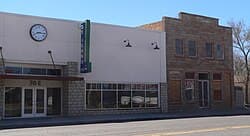Navajo Nation Council directs emergency food response, targets SNAP disruptions
The 25th Navajo Nation Council through the Naabik’íyáti’ Committee met in early November to coordinate a multiagency response to federal and state Supplemental Nutrition Assistance Program benefit pauses that have affected families across Arizona, New Mexico, and Utah. The meeting produced a food assistance framework, staging plans for Apache County communities including Chinle, and a public web hub to help households transition to Navajo Nation food programs.

The 25th Navajo Nation Council convened through its Naabik’íyáti’ Committee on November 7 to receive updates from the Chiyáán Access Action Team and to provide direction to Navajo Nation departments and partner agencies responding to disruptions in Supplemental Nutrition Assistance Program benefits. Lawmakers cited immediate concerns for households across the Nation and in border states where pauses in federal and state benefits have raised the risk of food insecurity.
Reports to the committee came from the Navajo Nation Washington Office, the Department of Health and the Department of Emergency Management, as well as the Division of Community Development, the Division of Children and Family Services, the Division of Economic Development and other partners. The Department of Emergency Management and the Department of Health reported the establishment of an Incident Management Team and the development of planning measures now collected in a Navajo Nation Food Assistance 2025 framework. The framework identifies regional staging areas for food delivery and storage coordination with specific hubs in Window Rock, Chinle, Kayenta, Tuba City, and Red Mesa, all in Arizona.
Council leaders emphasized a unified response across all 110 chapters, improved communication and enhanced data collection to track needs and delivery efforts. Potential funding sources discussed at the meeting included allocations from the COVID 19 Relief Fund to support emergency food operations. The council also launched a public web hub with a directory of food banks, chapter distribution locations and guidance for households transitioning from SNAP to Navajo Nation food assistance programs.
'The Council’s priority is to ensure our families are not left behind,' said Council Speaker Crystalyne Curley.
For Apache County residents the meeting has direct consequences. Communities such as Chinle face compounded challenges because limited internet connectivity makes it harder for families to receive federal notifications and enroll in alternative supports. The staging plans and a focus on mobile distributions seek to address those connectivity gaps by bringing food to remote households and coordinating local chapter resources.
Local chapters will be central to implementation. Committee direction called for chapters to share data on needs and existing resources so the Incident Management Team can prioritize routes and storage capacity. Tribal and intergovernmental coordination will also aim to smooth transitions for households that had relied on SNAP, while minimizing interruptions in basic food access.
The council action comes amid broader regional pressures as Navajo families navigate benefit pauses across three states. For Apache County residents, the forthcoming weeks will test whether the new framework and staging hubs can translate into timely deliveries and sustained support. Navajo Nation officials have signaled that chapters and local agencies will be engaged in the next phase of planning and distribution to ensure resources reach the most isolated households.


